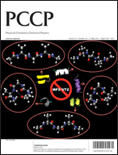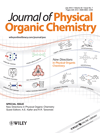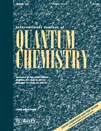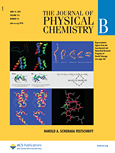
JOURNAL OF MOLECULAR LIQUIDS
Scope & Guideline
Advancing Research in Molecular Dynamics
Introduction
Aims and Scopes
- Molecular Interactions and Dynamics:
The journal prioritizes research that investigates the fundamental molecular dynamics and interactions in liquid systems, including solvent-solute interactions, hydrogen bonding, and the effects of various temperatures and pressures. - Thermodynamic Properties and Phase Behavior:
Studies on the thermodynamic properties of liquids, including solubility, vapor-liquid equilibria, and phase transitions, are central to the journal's scope, contributing to the understanding of liquid behavior in different environments. - Nanotechnology and Advanced Materials:
Research focusing on the synthesis and application of nanomaterials, particularly in enhancing the properties of liquids and their interactions, is a vital aspect of the journal's contributions. - Ionic Liquids and Deep Eutectic Solvents:
The journal features investigations into ionic liquids and deep eutectic solvents, exploring their roles in various chemical processes, including extraction, catalysis, and their environmental impacts. - Sustainable and Green Chemistry:
Research that promotes sustainable practices, including the use of renewable resources in solvent systems and environmentally friendly extraction methods, is emphasized to address contemporary chemical challenges.
Trending and Emerging
- Deep Eutectic Solvents:
Research into deep eutectic solvents is expanding, highlighting their versatility in extraction processes, catalysis, and as green alternatives to traditional solvents. - Nanomaterials and Their Applications:
There is a growing trend in exploring the synthesis and application of nanomaterials within liquid systems, focusing on their enhanced properties for environmental remediation, catalysis, and drug delivery. - Machine Learning in Solubility Prediction:
The integration of machine learning techniques for predicting solubility and other thermodynamic properties is on the rise, demonstrating the journal's commitment to modern computational methods. - Biomolecular Interactions and Drug Delivery Systems:
Research focusing on the interactions between biomolecules and solvents, particularly in the context of drug delivery systems and biocompatibility, is gaining traction. - Sustainable Practices in Chemical Research:
There is an increasing emphasis on sustainability, with studies aimed at reducing environmental impact through innovative solvent systems and green chemistry practices.
Declining or Waning
- Traditional Organic Solvents:
There is a noticeable decline in studies centered around conventional organic solvents as researchers increasingly adopt greener alternatives like ionic liquids and deep eutectic solvents. - Single Solvent Systems:
Research focusing solely on single solvent systems is waning as the trend shifts toward studying mixed solvent systems that better mimic real-world applications and interactions. - Classical Thermodynamics without Computational Validation:
The reliance on classical thermodynamic approaches without accompanying computational studies appears to be diminishing, as the integration of computational methods becomes standard practice in liquid characterization.
Similar Journals

Moroccan Journal of Chemistry
Fostering Scientific Dialogue in Emerging Chemistry Fields.Moroccan Journal of Chemistry, published by the University Mohammed Premier Oujda, serves as a pivotal platform for researchers and professionals in the field of chemistry, particularly focusing on diverse and emerging areas within the discipline. Established in 2018, this open-access journal facilitates widespread dissemination of scholarly articles, ensuring that cutting-edge research reaches a global audience. With an ISSN of 2351-812X and categorized in the Q3 quartile for miscellaneous chemistry in 2023, the journal maintains rigorous peer-review standards while fostering an inclusive environment for scientific dialogue. Located in Morocco, it aims to bridge local and international research communities, contributing to the advancement of knowledge in chemistry. As it continues to grow, the Moroccan Journal of Chemistry remains an essential resource for students, educators, and professionals eager to stay abreast of the latest developments in the field.

THEORETICAL CHEMISTRY ACCOUNTS
Connecting Scholars in the Realm of Theoretical ChemistryTHEORETICAL CHEMISTRY ACCOUNTS is a prestigious journal dedicated to promoting the advancement of theoretical and computational chemistry. Published by Springer, this journal has become a vital resource for researchers, professionals, and students seeking to explore innovative theoretical approaches in chemistry since its inception in 1996. With a current impact factor positioning it in the Q3 category of Physical and Theoretical Chemistry, it underscores its importance in the academic landscape, ranking 113 out of 189 in its field according to Scopus. The journal embraces an Open Access model, making cutting-edge research widely accessible to the global community. Researchers are encouraged to submit their latest findings and theoretical advancements, contributing to the ever-expanding body of knowledge within this dynamic field. Addressing contemporary challenges and breakthroughs, THEORETICAL CHEMISTRY ACCOUNTS serves as an essential platform for dialogue and discovery among scholars dedicated to the intersection of chemistry and theory.

PHYSICAL CHEMISTRY CHEMICAL PHYSICS
Catalyzing Innovation in Physical Chemistry and Chemical PhysicsPhysical Chemistry Chemical Physics is a premier interdisciplinary journal published by the Royal Society of Chemistry, dedicated to advancing the fields of physical chemistry and chemical physics. With an impressive impact factor and categorized in the Q2 quartiles for both Physical and Theoretical Chemistry and Physics and Astronomy, this journal serves as a vital platform for the dissemination of high-quality research findings from 1999 through 2024. Based in the United Kingdom, the journal is committed to providing open access to its articles, enhancing the visibility and accessibility of research to a global audience. Researchers, professionals, and students alike are encouraged to contribute to this esteemed journal, ensuring impactful discussions and significant advancements in the understanding of chemical and physical phenomena. With strong Scopus rankings underscoring its relevance, Physical Chemistry Chemical Physics stands out as an essential resource for specialists striving to innovate and excel within these dynamic fields.

JOURNAL OF CHEMICAL CRYSTALLOGRAPHY
Bridging disciplines through innovative research in crystallography.Welcome to the Journal of Chemical Crystallography, a prominent publication dedicated to the advancement of knowledge in the fields of chemical crystallography, general chemistry, and condensed matter physics. Published by Springer/Plenum Publishers, this journal provides a critical platform for researchers, professionals, and students to disseminate and access innovative research findings and methodologies from 1994 to 2024. With an ISSN of 1074-1542 and E-ISSN 1572-8854, the journal currently holds a Q4 quartile ranking in both Chemistry and Condensed Matter Physics, reflecting its broadening scope and niche significance within the scientific community. While it operates under a traditional access model, it endeavors to promote high-quality research that advances theoretical and practical aspects of crystallography, making it an essential resource for those involved in these dynamic disciplines. Join us as we explore the intricate world of chemical structures and their properties, bridging gaps between chemistry and physics.

JOURNAL OF PHYSICAL ORGANIC CHEMISTRY
Advancing the frontiers of organic reactions.JOURNAL OF PHYSICAL ORGANIC CHEMISTRY, published by Wiley, serves as a vital platform for researchers and professionals in the fields of organic and physical theoretical chemistry. With a rich history of publication dating back to 1988 and continuing through 2024, this esteemed journal aims to advance the understanding of the physical principles underlying organic reactions and processes. Although it operates without an open access model, the journal maintains a respectable impact factor and has achieved Q3 rankings in both Organic Chemistry and Physical and Theoretical Chemistry as of 2023, affirming its relevance within the scientific community. Researchers looking to publish innovative studies will find a competitive space given its Scopus rankings—placed at #105 in Physical and Theoretical Chemistry and #123 in Organic Chemistry. The journal not only curates high-quality research but also encourages collaboration and the exchange of ideas, making it a cornerstone for anyone dedicated to exploring the complexities of organic materials and their physical interactions.

JOURNAL OF CHEMICAL SCIENCES
Fostering Collaboration in the World of Chemical SciencesThe JOURNAL OF CHEMICAL SCIENCES, published by the Indian Academy of Sciences, is a premier academic journal that serves the global community of chemists and researchers. With an ISSN of 0974-3626 and an E-ISSN of 0973-7103, this journal is pivotal in disseminating high-quality research across diverse areas of chemical sciences. As of 2023, it holds a respectable Q3 ranking in the field of Chemistry (miscellaneous) and ranks #215 out of 408 in General Chemistry according to Scopus, reflecting its commitment to advancing the discipline. Operating in an open-access format, the journal ensures that research findings are readily accessible to a broader audience, fostering collaboration and innovation. Established in 1980 and continuing to evolve, the journal's scope encompasses fundamental and applied chemistry, and aims to bridge gaps between theoretical and practical applications. With a mission to support the scientific community, the JOURNAL OF CHEMICAL SCIENCES is an essential resource for researchers, professionals, and students alike, providing a platform for the exchange of groundbreaking ideas and discoveries.

JOURNAL OF MOLECULAR MODELING
Transforming Theoretical Chemistry into Practical SolutionsJOURNAL OF MOLECULAR MODELING, published by Springer, is a pivotal resource for researchers and professionals in the fields of chemistry, computer science, and molecular sciences. The journal's ISSN is 1610-2940, with an E-ISSN of 0948-5023, reflecting its commitment to disseminating cutting-edge research from 1996 to 2024. Although the journal does not operate under an Open Access model, it remains an invaluable platform for the publication of innovative studies related to computational methods, theoretical chemistry, and molecular simulations. With a notable categorization across multiple quartiles—including Q4 in Catalysis and Q3 in Computational Theory and Mathematics—the journal holds a distinct rank in Scopus, highlighting its influence and contribution to the discipline. The importance of this journal lies in its ability to bridge the gap between theoretical understanding and practical applications, making it essential reading for students and scholars seeking to advance their knowledge and research in molecular modeling.

INTERNATIONAL JOURNAL OF QUANTUM CHEMISTRY
Transforming the Landscape of Quantum ChemistryInternational Journal of Quantum Chemistry is a distinguished scholarly publication that has been at the forefront of advancements in the realm of quantum chemistry since its inception in 1967. Published by Wiley in the United States, this journal holds a significant place in the academic community, currently indexed in the Q3 quartile across various categories including Atomic and Molecular Physics, Condensed Matter Physics, and Physical and Theoretical Chemistry. With an ISSN of 0020-7608 and an E-ISSN of 1097-461X, the journal offers a platform for researchers and professionals to disseminate cutting-edge findings in quantum chemical research. While it operates under a traditional subscription model, the journal remains committed to enhancing the visibility of its contributions within the scientific community. With a convergence of research that spans from 1967 to 2024, the International Journal of Quantum Chemistry is pivotal for anyone looking to advance their understanding and application of quantum principles in chemistry, providing valuable insights into the microscopic interactions that govern matter and its properties.

JOURNAL OF PHASE EQUILIBRIA AND DIFFUSION
Charting the Course of Phase Equilibria ResearchJOURNAL OF PHASE EQUILIBRIA AND DIFFUSION, published by Springer, stands as a pivotal resource in the fields of Condensed Matter Physics, Materials Chemistry, and Metals and Alloys. This esteemed journal, with an ISSN of 1547-7037 and an E-ISSN of 1863-7345, targets a diverse community of researchers, professionals, and students focused on the interactions and transformations of materials at various phases. With a commendable 2023 Q2 ranking across its relevant categories, it holds a significant position among contemporary scientific journals, with Scopus ranks reflecting its influence—#77 in Materials Science _ Metals and Alloys and #197 in Materials Science _ Materials Chemistry. Although it operates under a traditional subscription model, the journal's contributions span essential research and groundbreaking advancements from 2004 to 2024, encouraging rigorous exploration and fostering collaboration in pursuit of knowledge in phase equilibria and diffusion phenomena. The integrity and high standards maintained by the journal make it an indispensable platform for disseminating critical findings that shape the future of materials science.

JOURNAL OF PHYSICAL CHEMISTRY B
Advancing the Frontiers of Physical ChemistryJournal of Physical Chemistry B, published by the American Chemical Society, is a leading international platform dedicated to advancing our understanding of physical chemistry and its applications in various interdisciplinary fields. With an impressive 2023 Impact Factor, and categorized in Q1 for Physical and Theoretical Chemistry as well as Surfaces, Coatings and Films, this journal showcases cutting-edge research that contributes significantly to materials science, supporting the innovative development of new materials and technologies. The journal, established in 1997 and converging its years of publication to 2024, maintains rigorous peer-review standards and is accessible to a global audience, enabling the dissemination of pivotal research findings. Moreover, it is renowned for its comprehensive coverage in the realms of materials chemistry and miscellaneous medical applications, making it a vital resource for researchers, professionals, and students alike in their pursuit of excellence in scientific inquiry.